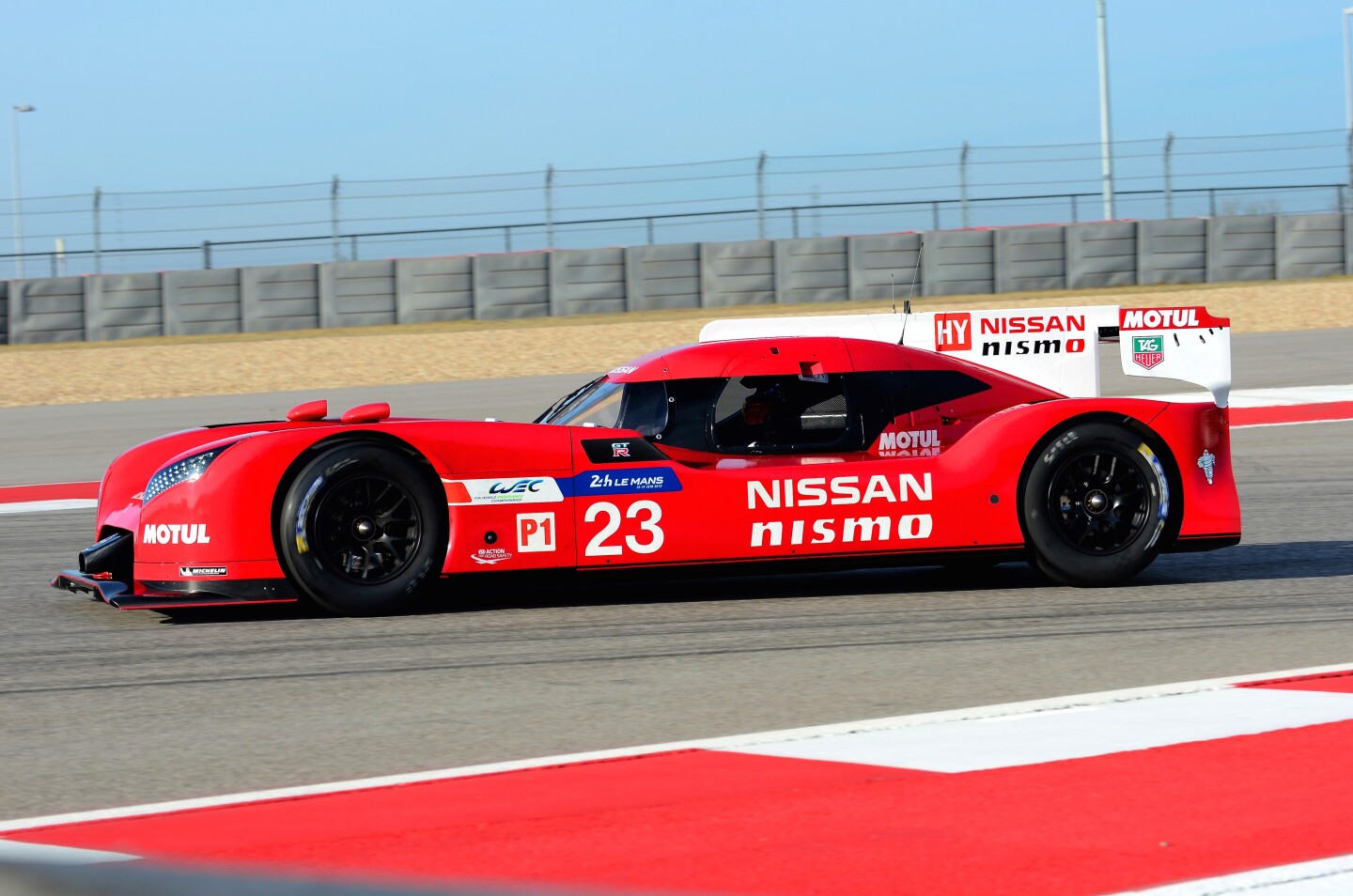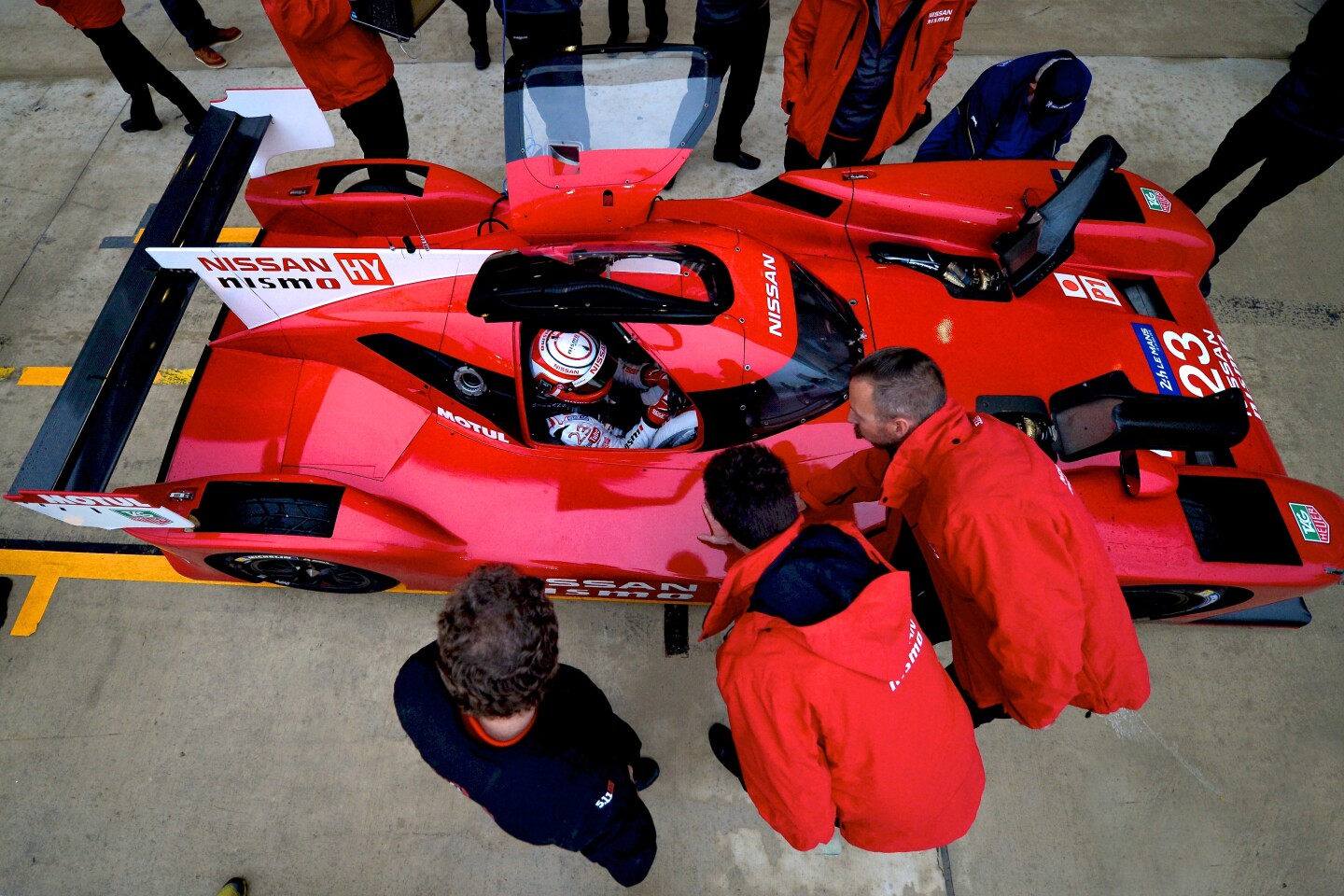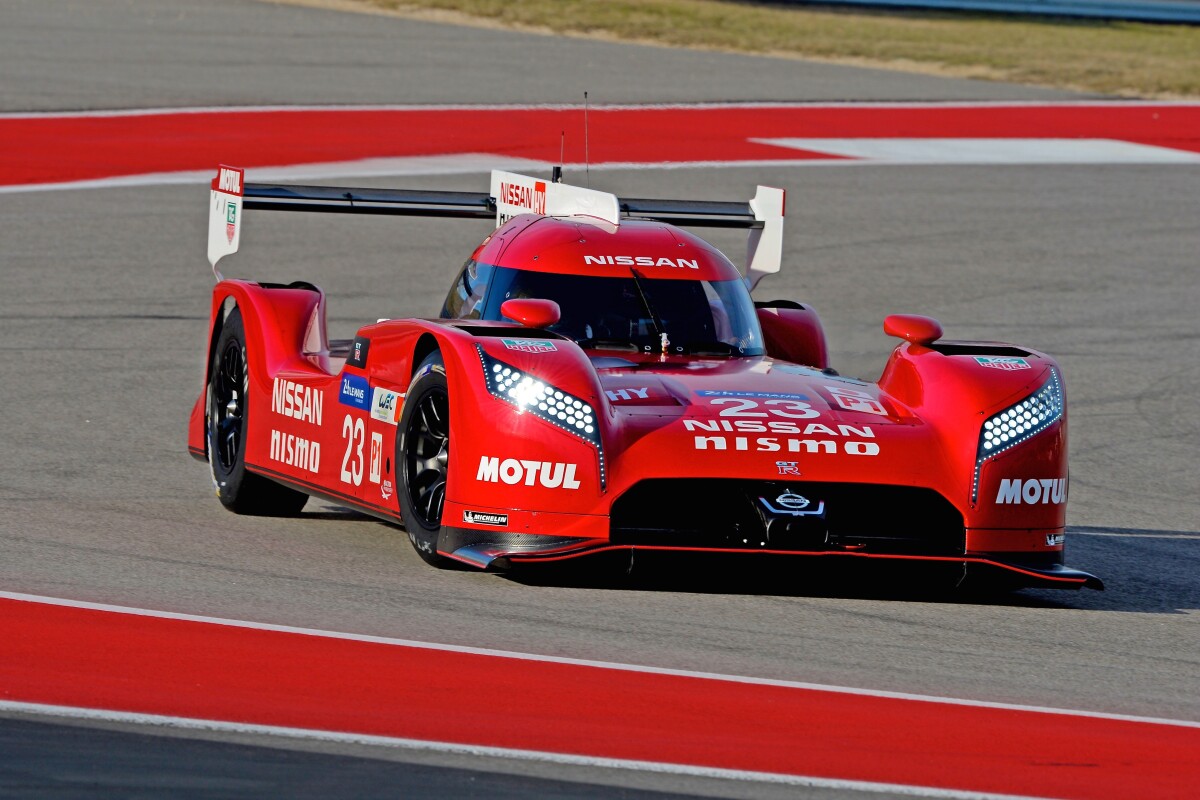Unveiled earlier this week, the Nissan GT-R LM NISMO LM P1 is, to put it bluntly, one of the craziest ideas to pull out onto a race track in decades. The twin-turbo, V6, kinetic-hybrid, front engined, front-wheel-drive car puts out over 1,200 horsepower (895 kW). Yes, you read that correctly: A front engined, front-wheel-drive racecar. Obviously, we need to take a look under the hood.
Listening to the engineers and those on the inside of the project, it all makes a certain kind of engineering sense ... to a point. Sure, on paper you can make a front-engined front-drive racecar, and, in theory, it will work. You can say that in much the same way you could say, sure, you can make a steam locomotive that can put a pound of bacon into orbit, and, in theory, it could work. But why? Why would a seemingly rational mechanical engineer do something that seems certifiably nuts?
If there is one immutable fact in the racing world, it is that rear wheel drive cars handle better. Period. Front wheel drive cars, although offering advantages in terms of packaging and such, handle terribly. They push, they understeer, they plow like a John Deere come harvest time.
Now, counter-intuitively, Nissan is taking on big time sportscar racing with a clean sheet of paper design that is seriously high tech, seriously powerful and seriously front-wheel drive.
The Nissan GT-R LM NISMO features, in many ways, rather standard fare, as far as driveline technology is concerned. It is primarily powered by a V6, twin turbo petrol engine. Nissan had the option to go with diesel, a la Audi, but went with petrol due to performance gains, a la Toyota. It is also a hybrid, but uses a kinetic flywheel hybrid system to both boost responsiveness and to drastically cut back on the weight that batteries would have imposed.

The wheel and tire combination is a little odd – comparatively skinny 9-inch tires paired with rather large 14-inchers. But when you realize that the 9s are in back and the 14s are up front, your mind begins to warp.
Nissan is not giving away any secrets, but it seems that its engineering staff arrived at this place in a rather paradoxical manner. They started with a horsepower figure in mind (in this case, a staggering 2,000 hp) and engineered the rest of the car to meet that goal. NISMO eventually dialed back the power output to around 1,250 hp, mainly due to packaging concerns, but along the way the proverbial "best engineering solution" pointed in the direction of, at first, a front engined car, and then, even more absurdly a front drive car.
A long-standing bugaboo has been the trade off between front end grip and turn-in versus the rearward weight bias of a modern mid-engined racecar. A mid-engined car gives you a lot: better packaging, lighter weight, lower polar moment of inertia, quicker turn in, etc. But it seems, when you really start pushing cars to the outside of their performance envelope – and I mean really stretching it, to the point where you have to take in the compliance of the tire sidewall as part of the spring and damping rates – getting the front end to stick after that initial turn-in is tough to figure out.
Nissan's literally backwards answer to this was to put the engine in the front and have it drive the front tires.
The description of the layout sounds like something Dr. Seuss would invent.
First, take the car's carbon fiber tub and mount the hybrid system (or KERS, for Kinetic Energy Recovery System) under the raised floor beneath the driver’s feet. Nissan call its version, which is supplied by Torotrak, Flybrid KERS. The system uses a collection of reduction gears and a weighted flywheel to make all the magic happen. In addition to saving weight compared with batteries, flywheel hybrid drive systems are also better at storing and releasing energy as quickly as possible. In front of the Flybrid, Nissan then bolts a remarkably small twin turbo V6 plant. In front of that there's a custom transmission and bellhousing unit that send the drive to the front wheels.

And just to make it even more surreal, the exhaust vents from the turbos out the top of the engine cover right in front of the windscreen. The designers have thoughtfully splayed the pipes so it isn't hitting the driver directly, but you'd have to think that it's going to be terribly bright and distracting in the middle of the night on the run from Mulsanne to Arnage. From a spectators' standpoint, it will probably look awesome.
Nissan is, of course, very optimistic.
"Le Mans drives innovation so success on the track will lead to greater innovation in our road car range," said Roel de Vries, Global Head of Marketing and Brand Strategy at Nissan. "We are the new kids at Le Mans; our opponents are the best in the world but we are ready."
"This is innovation that excites," said Shoichi Miyatani, President of NISMO. "Sustainability is at the top of our agenda and the technical regulations for Le Mans give us the freedom to pursue new ideas in this area. Our record at Le Mans is third place overall so we have unfinished business there. We want to win and we have the knowledge to do that – for our customers, our employees and our fans. The competition is exceptionally strong and we are excited by the challenge."
Nothing is certain in racing, and everything can seem like a long shot at times, but the path that Nissan has chosen to take seems to have a lot of green between the cue and the pocket. Will all this work? At this point, who can tell. We'll all know by 4:00 in the afternoon come June 14th.
Sources: Nissan, Racer Magazine




















